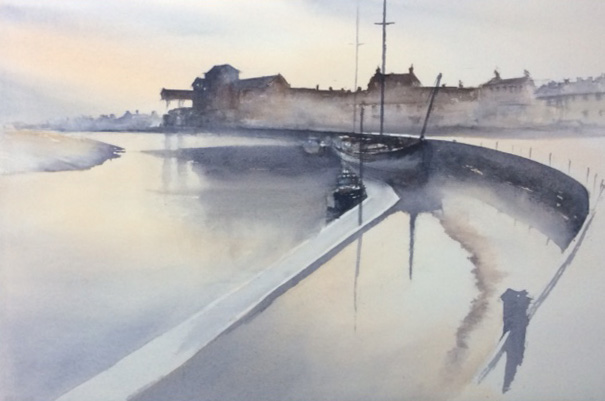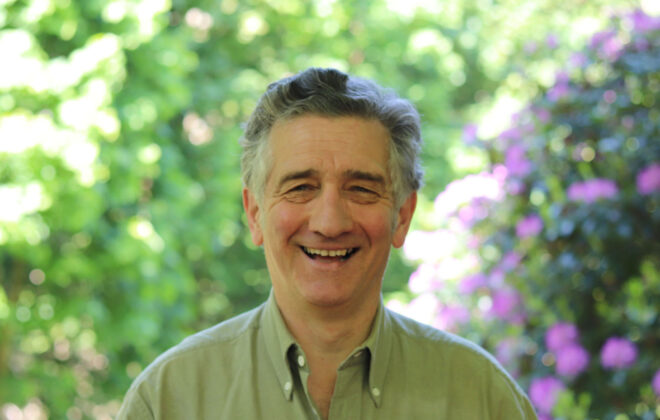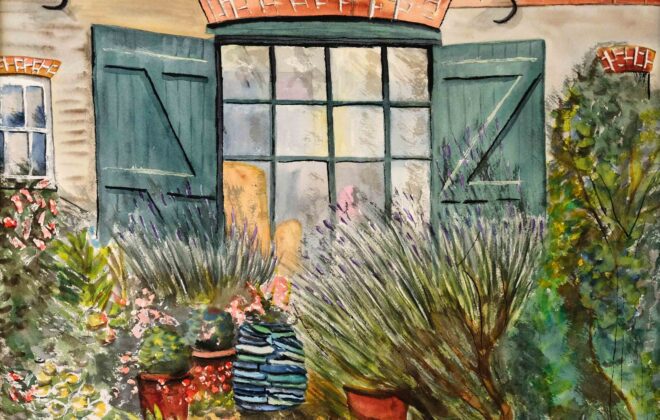MEET THE MEMBER – Alan Noyes

Other art societies you belong to:
Member of the Cambridge Drawing Society.
What led you to start painting?
Both my parents were artistic, my mother particularly and I remember being encouraged to draw and paint at a very early age. At school I enjoyed both art and the sciences and was granted a scholarship in art at Northgate Grammar School, Ipswich and was fortunate to receive training under Colin Moss at the Ipswich School of Art.
What is/was your day job (if not a full time artist)?
The mixture of art and science led me to train as an architect, a career which required a lot of drawing but little use of watercolour and it was not until I was approaching retirement, I found enough time to fully explore the wonderful world of watercolour. I have painted and drawn all my life, using most media – oil, ink, graphite, gouache, pastel but I always return to watercolour. It is the unpredictability of watercolour which I really love and it is the development of control over this uncontrollable medium I really enjoy. Having the knowledge of the effect of mixing one pigment into another is rewarding but allowing these pigments to blend and mingle of their own accord, introduces the excitement and reward of the unexpected which I find really enjoyable.
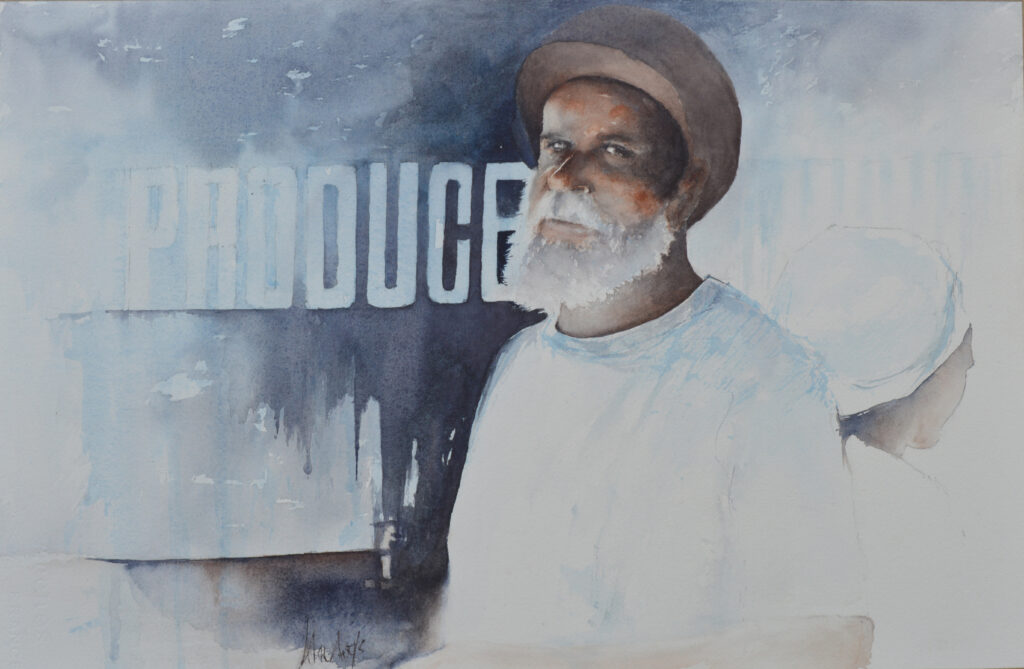
What is your favourite subject matter?
I struggle a lot over subject matter. My great passion is painting light so wherever I stumble upon great tonal contrast, I try to find a subject. It could be still life, portrait, landscape, a street scene, as long as there is strong tonal contrast. If that contrast doesn’t exist I will use the subject and create the contrast myself but I have to be attracted to it in the first place – I suppose in a way, the subject finds me!
Do you have a preference for painting style? If so, can you describe it?
My painting style has changed considerably over time, I don’t suppose I am unique there. As you work, you practice and hopefully, the more you practice the better you become. Without stating the obvious, watercolour is just what it says – water and colour. Looking back, my early work was stilted, I struggled to escape my architectural training which involved detail and straight lines. Now water dominates the colour and I work using very wet washes, dropping colour into the washes and onto wet paper, allowing much looser work. Hopefully I have a vague idea of what will happen but more often than not I am surprised and that is where the excitement comes in.
Which other artists inspire you?
My style has been influenced by a number of artists but in particular I would have to include Turner whose work undoubtedly effected the art establishment of his time. In present times, Andrew Wyeth for his wonderful use of darks and everyday subject matter, Joseph Zbukvic for his beautiful clear washes and Alex Powers for his adventurous portraiture. I also love the work of Chien Chung Wei, his abandoned looseness and rough detail. I would be very pleased with myself if I could achieve that.
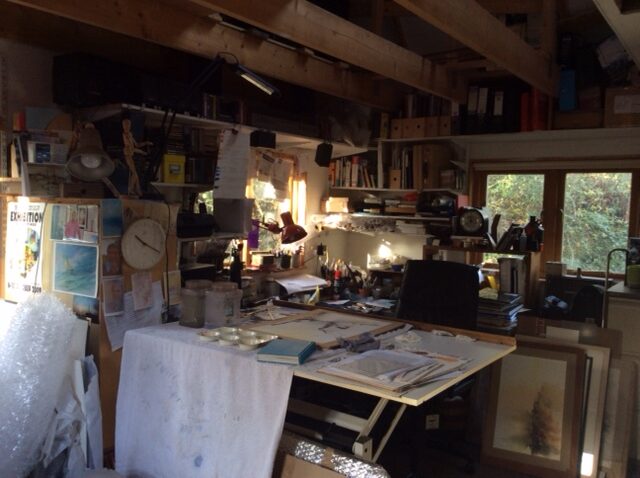
Plein air or studio?
Because my work involves a lot of water and overlaying of washes I have great difficulty in working plein air and therefore paint predominantly in my studio. I sketch out doors and use a camera for reference photos. Back in the studio I use sketches and photos to compile tonal sketches of promising subjects before letting myself loose on the final piece.
My favourite place to paint is (and why):
We as a family have ties with Bermuda going way back. I worked there, met my wife there, our two boys went to school there and I have been back to work as artist in residence at the Bermuda Masterwork Museum of Art. It is a great place to paint, the light is fantastic and although the island has changed a lot since I was first there, there are still little ‘undiscovered’ corners providing great subjects and off course it can be very warm and dry so plein air painting is not such a problem, in fact, trying to keep washes wet is more of a difficulty.
Favourite brushes and pigments:
I use a squirrel mop a lot, but recently I find I am using a sword brush more and more. It is very versatile and can provide both broad strokes and fine lines. Burnt sienna is a favourite pigment mixing well with blues to provide a variety of interesting greys and luscious darks.

Artistic highlights
In 2016 and again this year, I was lucky in having work accepted by the Royal Institute for Painters in Watercolour for their Open Exhibition held at the Mall Galleries. The work accepted this year, ‘Hat stack’, is the painting which won me the SEAW Members Award.
Best piece of advice you were ever given about art
Apart from the advice to persevere, a tutor, not many miles from here and quite a while ago now, once said to me “Your paper’s not doing you any favours boy, try using Arches”. I took his advice and have been using it ever since.
If you could give your teenage self one piece of advice, what would it be?
Advice to my teenage self is a hard question. Teenage years are a long way away and there are so many things I should have done but didn’t and there are at least as many things I should not have done but did! One good piece of advice to any young person is ‘don’t start smoking’. Like many things, it is pleasurable, dangerous and very hard to give up.
Tags In
Search by category
Blog archive
- February 2023
- October 2022
- June 2022
- April 2022
- January 2022
- October 2021
- July 2021
- April 2021
- March 2021
- February 2021
- January 2021
- October 2020
- September 2020
- August 2020
- July 2020
- June 2020
- May 2020
- April 2020
- March 2020
- February 2020
- January 2020
- December 2019
- October 2019
- July 2019
- April 2019
- March 2019
- January 2019
- December 2018
- April 2018

